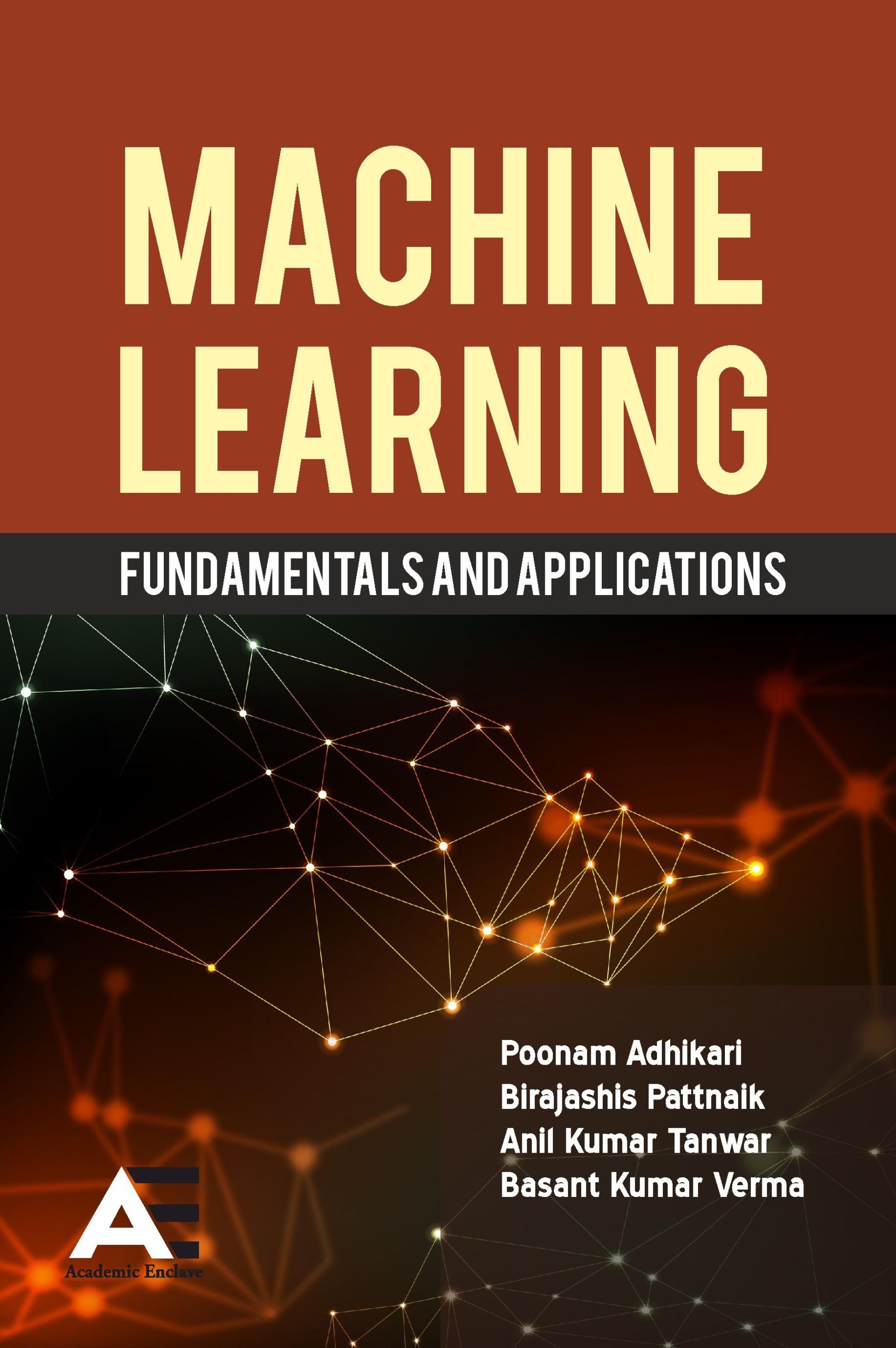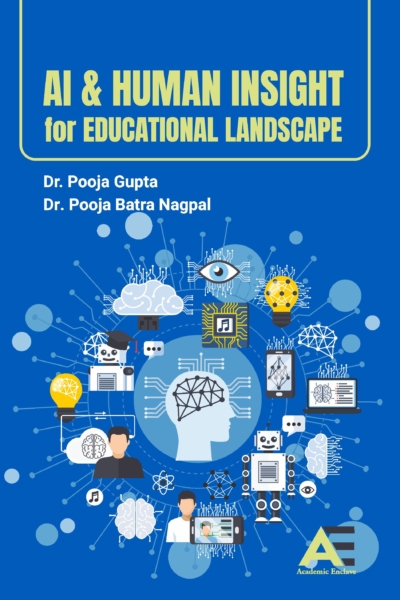Description
About the Book
Understanding Artificial Intelligence presents a comprehensive and structured journey through the foundational principles and advanced methodologies that drive the modern field of artificial intelligence and machine learning. The book is meticulously organized to serve as both a textbook for graduate-level learners and a reference manual for researchers and professionals aiming to understand and apply AI techniques in a wide variety of domains. By integrating theoretical frameworks with real-world applications, it offers readers both the “how” and “why” behind the workings of intelligent systems. Beginning with the basics in Chapter 1: Fundamentals of Machine Learning, the book gradually builds the reader’s understanding of essential algorithms, learning paradigms, and modeling techniques. This is followed by an exploration of advanced strategies in Chapter 2, which dives into optimization, regularization, and ensemble methods that refine the learning process. Through clearly explained mathematical formulations and illustrative examples, readers are empowered to engage deeply with core concepts while also preparing for complex implementations. Chapters 3 through 5 guide readers through pivotal domains such as unsupervised learning, probabilistic models, reinforcement learning, and deep neural networks. These chapters serve as a bridge between theoretical understanding and practical deployment, offering insight into clustering, dimensionality reduction, Q-learning, policy optimization, convolutional and recurrent architectures. In particular, the deep learning chapter provides a robust look into the structures and operations that power modern AI—from natural language processing to computer vision. The book goes beyond techniques and tools by addressing the theoretical and statistical underpinnings of machine learning in Chapters 7 and 8. By introducing concepts from information theory, generalization, VC dimensions, and entropy, it fosters a deeper appreciation for the mathematical rigor that supports AI’s growth. Furthermore, Chapter 6 on applications illustrates the transformative impact of machine learning across healthcare, robotics, finance, cybersecurity, and smart environments, linking abstract ideas to tangible societal advancements. Overall, Understanding Artificial Intelligence: Fundamentals and Applications is designed to offer a balanced, in-depth view of the AI ecosystem—ideal for students, educators, and practitioners alike. It emphasizes clarity, real-world relevance, and intellectual rigor, making it a valuable guide for anyone seeking to master the evolving landscape of intelligent systems.
About the Authors
Ms. Poonam Adhikari is an accomplished researcher and educator with over six years of experience in academia. Her research journey began at IIT, Ropar, where she specialized in computer vision and natural language processing, making significant contributions to scholarly literature. As the founder of EdVanta AI, a forward-thinking edtech platform, she is dedicated to bridging the gap between academia and industry, empowering the next generation of learners and professionals with essential skills.
Prof. (Dr.) Birajashis Pattnaik, Professor of Mechanical Engineering at Medicaps University, Indore, is a seasoned academic leader with 32 years of experience in education, research, and institutional administration. Holding a Ph.D. from IIT Kharagpur, his expertise spans Quality Control Engineering, Artificial Intelligence (AI), and Micro-Electro-Mechanical Systems (MEMS). He has been instrumental in advancing strategic academic planning, accreditation (NAAC & NBA), campus administration, and global industry-academia collaborations, significantly contributing to research excellence and institutional growth.
Mr. Anil Kumar Tanwar is currently working as a Deputy Manager in the Technology Team (Design) in a South Korea Based company in the Field of Physics with more than fifteen years of professional experience in R&D, Manufacturing, and Quality Engineering with an emphasis on Vacuum Technology, High frequency THz devices: – Design & Development of Electron Sources, Super Conduction Coils, high volume production. Anil has a diverse skill set, with experience as a design engineer on finite element analysis models for various types of Electromagnets for Accelerator, Medical, and Education. His research interests revolve around IOT based devices, Smart devices, & Network Security, Theory of Computation, and Internet of Things (IoT) Mr. Anil also have expertise in the RF components design, Manufacturing, and RF Tests for Accelerators Nuclear Fusion Reactors, He having expertise in various New communication Technologies and processes. Anil holds a Bachelor’s degree in Electronics & Communications Engineering from the Sabarmati University Gujrat, India.
Prof. (Dr.) Basant Kumar Verma is currently serving as Professor and Head of the Department of Computer Science and Engineering – Artificial Intelligence and Data Science at Panipat Institute of Engineering and Technology (PIET), Haryana. He holds B.E. and M.E. degrees from BITS Pilani, Rajasthan, and a D.Sc. from The Thames International University, Paris, France. His academic and professional journey reflects his unwavering commitment to excellence and innovation.
Contents
- Introduction1
- Basic Concepts of Machine Learning2
- Definition of Learning Systems3
- Goals and Applications of Machine Learning4
- Manufacturing and Robotics7
- Aspects of Developing a Learning System7
- Types of Learning12
- Overview of Classification in Machine Learning22
- Classification Families28
- Summary33
- Exercise Questions33
- Logistic Regression36
- Perceptron38
- Exponential Family39
- Generative Learning Algorithms40
- Gaussian Discriminant Analysis45
- Naive Bayes47
- Support Vector Machines: Optimal hyper plane and Kernels49
- Model Selection and Feature Selection51
- Combining Classifiers62
- Bagging (Bootstrap Aggregating)62
- Boosting (AdaBoost)64
- AdaBoost (Adaptive Boosting)64
- Evaluating and Debugging Learning Algorithms65
- Debugging Algorithms67
- Classification Errors69
- Summary72
- Exercise Questions72
- Unsupervised Learning: Clustering76
- K-Means Clustering80
- Expectation-Maximization (EM) Algorithm81
- Mixture of Gaussians (GMM)82
- Factor Analysis (FA)84
- Principal Component Analysis (PCA)85
- Latent Semantic Indexing (LSI)88
- Spectral Clustering89
- Markov Models91
- Summary98
- Exercise Questions99
- Reinforcement Learning and Control102
- Markov Decision Process (MDP)112
- Value Iteration and Policy Iteration114
- Linear quadratic regulation (LQR)117
- Linear Quadratic Gaussian (LQG) 121
- Q-Learning125
- Value Function Approximation126
- Policy Search: Direct Optimization of Policies128
- REINFORCE (Monte Carlo Policy Gradient)129
- Partially Observable Markov Decision Processes (POMDPs)131
- Summary132
- Exercise Questions133
- Introduction to Neural Networks136
- Perceptron and Multi-layer Perceptron (MLP)144
- Backpropagation Algorithm146
- Activation Functions (ReLU, Sigmoid, Tanh)150
- Deep Learning Basics151
- Applications of Deep Learning152
- Summary153
- Exercise Questions154
- Machine Learning in Healthcare (Disease Prediction, Medical Imaging)156
- Machine Learning in Finance (Fraud Detection, Stock Market Prediction)161
- Machine Learning in Robotics (Autonomous Systems, Reinforcement Learning in Robotics)165
- Machine Learning in E-commerce (Recommendation Systems, Customer Segmentation)172
- Customer Segmentation in E-commerce174
- Ethical and Social Implications of Machine Learning179
- Future Trends in AI and Machine Learning183
- Summary187
- Exercise Questions188
- Introduction to Learning Theory190
- Bias-Variance Tradeoff193
- Probably Approximately Correct (PAC) Learning197
- No Free Lunch Theorem199
- Occam’s Razor and Model Simplicity202
- Role of Assumptions in Learning Algorithms203
- Curse of Dimensionality207
- Summary213
- Exercise Questions213
- Information Theory in ML216
- Kullback-Leibler Divergence and Cross-Entropy218
- Maximum Likelihood Estimation (MLE) and Maximum a Posteriori (MAP)222
- Bayesian Inference in Machine Learning225
- Likelihood Functions and Log-Loss227
- Risk Minimization and Loss Functions230
- Fisher Information and Cramér-Rao Bound234
- Summary237
- Exercise questions238
- Bibliography239
- References Books242








Reviews
There are no reviews yet.